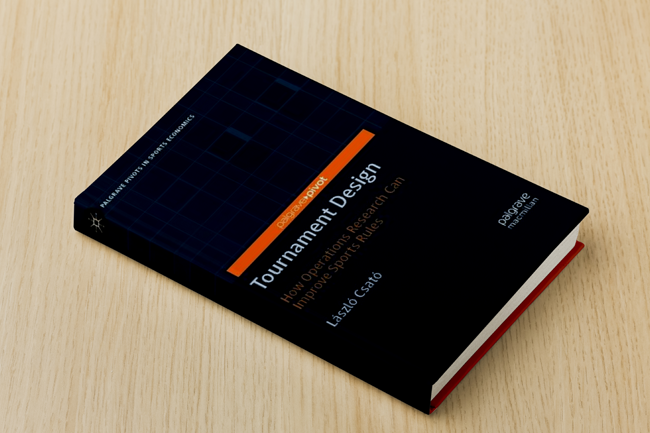Scientific research becomes fruitful even in the design of sports rules
For many spectators, sport is perhaps only one of the most popular branch of the entertainment industry. However, the rules – the tournament format, the ranking, the seeding procedure, or the mechanism of penalty shootouts – are based on important findings of economics, mathematics, or operations research. Or, at least, this would be the ideal case.
Csató László, a research fellow of the Laboratory on Engineering and Management Intelligence, Research Group of Operations Research and Decision Systems has recently written a book on this topic, which is part of the Palgrave Pivots in Sports Economics series under the title “Tournament Design (How Operations Research Can Improve Sport Rules)”.
The monograph presents tournament design mainly within the axioms of incentive compatibility and fairness. It illustrates the advantages of an axiomatic approach through various examples, including several FIFA and UEFA tournaments, and uses theoretical tools and simulation methodology in its analysis.
Chapter 1 discusses scoring systems of championships with multiple competitions, ranking in Swiss-system tournaments, and tie-breaking rules in round-robin leagues. It is followed by a thorough critical analysis of the current and previous FIFA World Rankings. The broad focus is substantially narrowed in Chapter 2, which turns to the topic of incentive (in)compatibility in multiple qualifiers. It is revealed that UEFA has faced at least three times recently this problem in the qualification to the UEFA Europa League, qualification to the UEFA Champions League, and the draw of the UEFA Champions League groups. Analogously, Chapter 3 discusses incentive (in)compatibility when there is only one group-based tournament but the complex progression rules to the subsequent stage can be designed poorly. Our examples include the qualifying tournaments of recent FIFA World Cups and UEFA European Championships.
Chapter 4 moves to the problem of penalty shootout rules in soccer, where the fairness and complexity of some alternative mechanisms from the literature are evaluated. Fairness remains the central issue in Chapter 5, which presents the challenges of designing a tournament with 24 teams if the number of teams per group cannot exceed four. As expected, there is no perfect solution, and both FIFA and UEFA have introduced a reform in this format recently. Chapter 6 deals with the qualification for the 2020 UEFA European Football Championship. Its tournament design is perhaps the most complicated one that has ever been implemented in the real-world and suffers from serious shortcomings.
The summary of the book emphasises that these topics represent only a small fraction of fairness issues in sports. Hopefully, both the scientific community and sports administrators will be more open to the other’s ideas and thoughts in the future in order to improve economic and social welfare.
